
Altstadt: The Heartbeat of Würzburg
Explore the historic charm of Altstadt in Würzburg, where medieval architecture, vibrant culture, and rich history meet on the banks of the Main River.
Altstadt, the historic old town of Würzburg, is a charming blend of medieval architecture, vibrant culture, and rich history. This picturesque neighborhood is nestled on the banks of the Main River and offers visitors a glimpse into the past with its cobblestone streets, half-timbered houses, and grandiose churches. The Altstadt is home to some of the city's most iconic landmarks, including the Würzburg Residence, a UNESCO World Heritage site, known for its stunning baroque architecture and beautifully manicured gardens. A stroll through the Altstadt reveals a tapestry of the city's history, from the imposing Marienberg Fortress that watches over the town to the elegant Alte Mainbrücke, the old bridge adorned with statues of saints. The neighborhood is also a hub for local culture, with numerous museums, art galleries, and theaters showcasing the rich artistic heritage of Würzburg. The bustling Market Square is a focal point, where visitors can sample local delicacies, from Franconian wines to traditional bratwurst, and explore the vibrant farmers' market. Altstadt is not just about history and culture; it is also a lively destination for shopping and dining. The streets are lined with boutique shops, cafes, and restaurants, offering everything from high-end fashion to quaint souvenirs. At night, the neighborhood comes alive with a myriad of bars and pubs, perfect for enjoying a glass of local wine or beer while soaking in the historic ambiance. Whether you're a history buff, a foodie, or simply looking to immerse yourself in the charm of an old European town, Altstadt in Würzburg is a destination that promises to enchant and delight.
Local tips in Altstadt
- Visit the Würzburg Residence early in the morning to avoid crowds and fully appreciate its stunning baroque architecture.
- Take a leisurely walk on the Alte Mainbrücke at sunset for a breathtaking view of the city and the Marienberg Fortress.
- Sample local Franconian wines at one of the many wine bars in the neighborhood; the region is famous for its quality wines.
- Don't miss the farmers' market at the Market Square for fresh local produce and authentic Franconian specialties.
- Wear comfortable shoes as the cobblestone streets can be uneven and require a bit of walking.
Altstadt: The Heartbeat of Würzburg
Altstadt, the historic old town of Würzburg, is a charming blend of medieval architecture, vibrant culture, and rich history. This picturesque neighborhood is nestled on the banks of the Main River and offers visitors a glimpse into the past with its cobblestone streets, half-timbered houses, and grandiose churches. The Altstadt is home to some of the city's most iconic landmarks, including the Würzburg Residence, a UNESCO World Heritage site, known for its stunning baroque architecture and beautifully manicured gardens. A stroll through the Altstadt reveals a tapestry of the city's history, from the imposing Marienberg Fortress that watches over the town to the elegant Alte Mainbrücke, the old bridge adorned with statues of saints. The neighborhood is also a hub for local culture, with numerous museums, art galleries, and theaters showcasing the rich artistic heritage of Würzburg. The bustling Market Square is a focal point, where visitors can sample local delicacies, from Franconian wines to traditional bratwurst, and explore the vibrant farmers' market. Altstadt is not just about history and culture; it is also a lively destination for shopping and dining. The streets are lined with boutique shops, cafes, and restaurants, offering everything from high-end fashion to quaint souvenirs. At night, the neighborhood comes alive with a myriad of bars and pubs, perfect for enjoying a glass of local wine or beer while soaking in the historic ambiance. Whether you're a history buff, a foodie, or simply looking to immerse yourself in the charm of an old European town, Altstadt in Würzburg is a destination that promises to enchant and delight.
Iconic landmarks you can’t miss
Old Main Bridge
Experience the enchanting beauty and rich history of Wuerzburg's Old Main Bridge, a timeless landmark by the Main River.

Würzburg Residence
Explore the stunning Baroque architecture and lush gardens of Würzburg Residence, a UNESCO World Heritage site and a must-visit for tourists.

Wurzburg Cathedral
Explore the grandeur of Würzburg Cathedral, a stunning Romanesque masterpiece and a spiritual haven in the heart of Bavaria.

Court Garden
Explore the breathtaking beauty of the Court Garden in Würzburg, a Baroque masterpiece filled with vibrant flora and rich history.

Falkenhaus
Explore the stunning Rococo facade of Falkenhaus, a historical landmark in Würzburg, and immerse yourself in the city's rich cultural heritage.

Kilian Fountain
Explore the beauty and history of Kilian Fountain, a stunning landmark in Würzburg, showcasing the city's rich cultural heritage and inviting atmosphere.

Innenhof Juliusspital
Explore the tranquil Innenhof Juliusspital in Würzburg, a historic courtyard blending stunning architecture with exceptional wine tasting experiences.

Balthasar-Neumann-Promenade Bastion
Discover the historical significance and scenic beauty of Balthasar-Neumann-Promenade Bastion in Würzburg, a must-visit landmark for every tourist.

Barbarossaplatz
Discover the charm of Barbarossaplatz in Würzburg, a historical square that embodies local culture and stunning architecture.

Brunnen am Dominikanerplatz
Discover the charm of Brunnen am Dominikanerplatz, a beautiful fountain in Würzburg's historic Old Town, perfect for relaxation and cultural immersion.

Unmissable attractions to see
Old Main Bridge
Discover the historic charm of the Old Main Bridge in Würzburg, a picturesque landmark offering stunning views and rich cultural heritage.
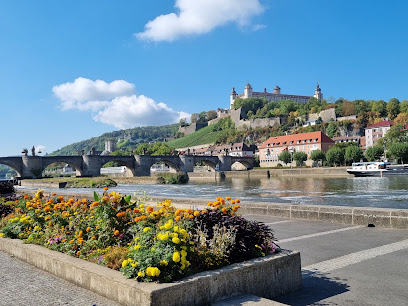
Marienberg Fortress
Explore the historical Marienberg Fortress in Würzburg, a captivating blend of stunning architecture and breathtaking views steeped in rich heritage.

Würzburg Residence
Discover the breathtaking Würzburg Residence, a UNESCO World Heritage Site showcasing stunning baroque architecture and beautiful gardens in Germany.
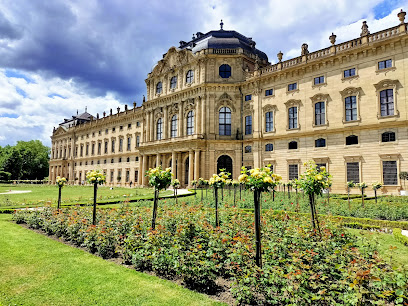
Wurzburg Cathedral
Discover the architectural splendor and spiritual serenity of Wurzburg Cathedral, a must-visit landmark in Wurzburg offering rich history and stunning artistry.

Four Tubes Fountain
Explore the Four Tubes Fountain in Würzburg, a stunning historical landmark showcasing intricate designs and a serene atmosphere amidst vibrant city life.

Falkenhaus
Explore the captivating Falkenhaus in Würzburg, a stunning example of Rococo architecture and a key piece of the city's historical heritage.

Kilian Fountain
Experience the beauty of the Kilian Fountain in Würzburg, a historical landmark that showcases exquisite craftsmanship and vibrant city life.

Innenhof Juliusspital
Discover the serene beauty and rich history of Innenhof Juliusspital, Würzburg's enchanting courtyard and wine estate.

Brunnen am Juliuspromenade
Discover the beauty and history of Brunnen am Juliuspromenade, a serene fountain and cultural landmark in the heart of Würzburg, Germany.

Barbarossaplatz
Explore Barbarossaplatz, a vibrant square in Würzburg, rich in history and surrounded by stunning architecture and local culture.

Essential places to dine
Almoço e jantar Brewery Inn Alter Kranen
Experience authentic German cuisine at Brewery Inn Alter Kranen in Würzburg, where delicious flavors meet breathtaking river views.

Backöfele
Experience authentic Franconian cuisine at Backöfele - a delightful Bavarian restaurant in the heart of Würzburg.
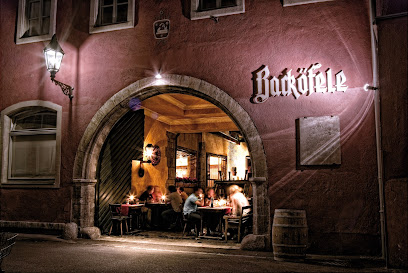
Gasthaus Alte Mainmühle
Experience exquisite German cuisine at Gasthaus Alte Mainmühle while enjoying stunning views of the Main River in Würzburg.

Würzburger Ratskeller
Experience authentic Franconian cuisine at Würzburger Ratskeller in Würzburg's charming Altstadt.

Restaurant & Weinhaus Stachel
Experience authentic German cuisine and exquisite Franconian wines at Restaurant & Weinhaus Stachel in the heart of Würzburg.

Wirtshaus am Dom Würzburg
Experience authentic European cuisine at Wirtshaus am Dom in Würzburg's historic Altstadt, where culinary excellence meets warm hospitality.

Restaurant Vier Jahreszeiten Würzburg
Experience authentic Franconian cuisine in an inviting atmosphere at Restaurant Vier Jahreszeiten in Würzburg's charming beer garden.
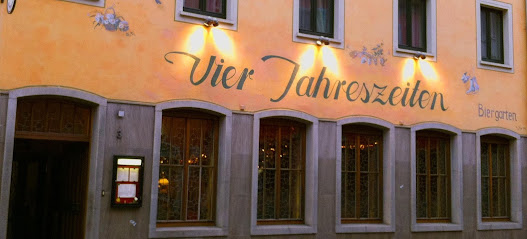
Franziskaner - Würzburg
Discover authentic German cuisine at Franziskaner - Würzburg's culinary gem offering traditional dishes and local brews.
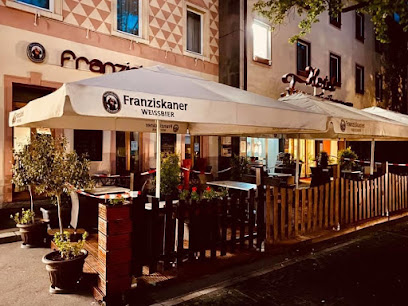
Restaurant Sankt Michael
Experience authentic Franconian cuisine at Restaurant Sankt Michael in Würzburg - a must-visit for food lovers seeking local flavors.
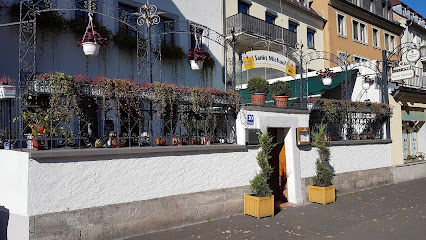
KUNO 1408
Experience the finest Franconian cuisine at KUNO 1408 in Würzburg – where tradition meets modern culinary excellence.

Markets, malls and hidden boutiques
Galeria Kaufhof
Discover a shopping paradise at Galeria Kaufhof in Würzburg, where local charm meets international brands in a delightful retail experience.

EXKLAVE Vintage Concept-Store (Second-Hand Shop)
Explore the charm of sustainable shopping at EXKLAVE Vintage Concept-Store, where every piece tells a story and fashion meets eco-friendliness.

Palm of Paradise
Explore the vibrant fashion scene at Palm of Paradise in Würzburg, where unique styles meet warm hospitality for an unforgettable shopping experience.

Exklave Vintage Atelier -Clothing Store-
Discover unique vintage clothing and sustainable fashion at Exklave Vintage Atelier in Würzburg's charming Altstadt district.
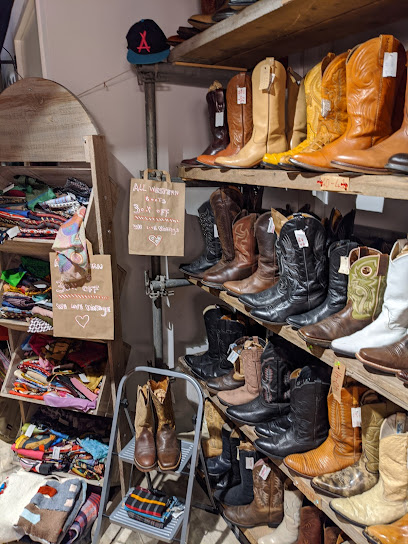
Skand Store
Explore Skand Store in Würzburg for unique gifts and stylish clothing that capture the charm of this historic city.

Eton Place - Schönes aus England
Discover Eton Place, the enchanting gift shop in Würzburg, offering a splendid collection of unique English treasures and souvenirs.
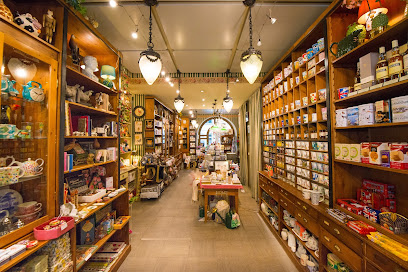
#BLOGGED - Die Boutique
Discover the latest trends in women's fashion at #BLOGGED - Die Boutique, a stylish haven in the heart of Würzburg's Altstadt.
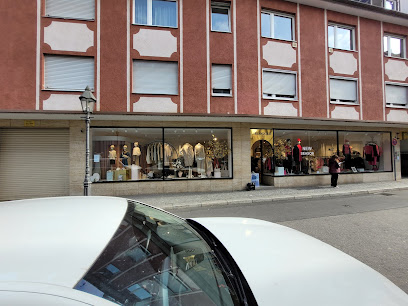
Zeitgeist
Explore unique gifts and local artistry at Zeitgeist, Würzburg's charming gift shop filled with treasures that reflect the region's rich culture.

Dies & Das
Explore Dies & Das in Würzburg, a charming gift shop offering unique souvenirs and local crafts, perfect for capturing the essence of your travels.

5 fine fashion - Der Laden mit Liebe zum Design
Explore the stylish world of 5 Fine Fashion Boutique in Würzburg, where elegance and unique designs come together in a charming shopping experience.

Essential bars & hidden hideouts
Wohnzimmer Bar Würzburg
Discover the vibrant ambiance and delightful drinks at Wohnzimmer Bar in Würzburg, where nightlife meets cozy comfort.

The Red Lion Pub - Würzburg
Experience the warmth of Irish hospitality at The Red Lion Pub in Würzburg, where great food and drinks meet a lively atmosphere.

Nachtwächter
Discover the charm and vibrant nightlife of Würzburg at Nachtwächter, where authentic German food and drinks await you in a cozy pub setting.

Hasenstall - Würzburg
Discover Würzburg's nightlife at Hasenstall, a vibrant bar offering exceptional cocktails, a lively atmosphere, and unforgettable experiences in the heart of the city.

Weinstube und Bierkeller Till Eulenspiegel
Discover the heart of Würzburg's culinary scene at Weinstube und Bierkeller Till Eulenspiegel, where local wines and traditional dishes come together in a cozy setting.

La Bamba - Würzburg
Discover the lively nightlife at La Bamba in Würzburg, where great drinks and a vibrant atmosphere await every night.

Irish Pixie
Experience the warmth of Ireland at Irish Pixie, a cozy bar in Würzburg offering an exceptional selection of drinks and a vibrant atmosphere.

Heinrich
Discover Heinrich in Würzburg – an inviting bar with a vibrant atmosphere and a rich selection of drinks perfect for unwinding and socializing.

Chase Bar
Discover the vibrant nightlife of Würzburg at Chase Bar, where signature cocktails, dancing, and an inviting atmosphere await you.

Bar SIGMA - Würzburg
Experience the vibrant nightlife at Bar SIGMA in Würzburg, where expertly crafted cocktails and a welcoming atmosphere await you.

Local Phrases
-
- HelloHallo
[HAH-loh] - GoodbyeAuf Wiedersehen
[owf VEE-der-zay-en] - YesJa
[yah] - NoNein
[nine] - Please/You're welcomeBitte
[BIT-tuh] - Thank youDanke
[DAHN-kuh] - Excuse me/SorryEntschuldigung
[ent-SHOOL-dee-goong] - How are you?Wie geht es Ihnen?
[vee gayt es ee-nen] - Fine. And you?Gut. Und Ihnen?
[goot oont ee-nen] - Do you speak English?Sprechen Sie Englisch?
[shpre-khen zee ENG-lish] - I don't understandIch verstehe nicht
[ikh fer-shtay-uh nikht]
- HelloHallo
-
- I'd like to see the menu, pleaseIch würde gerne die Speisekarte sehen, bitte
[ikh VOOR-duh geh-ren duh SHPYE-ze-kar-teh zay-en, BIT-tuh] - I don't eat meatIch esse kein Fleisch
[ikh ESS-uh kine FLYSH] - Cheers!Prost!
[prohst] - I would like to pay, pleaseIch möchte bitte zahlen
[ikh murk-teh BIT-tuh ZAH-len]
- I'd like to see the menu, pleaseIch würde gerne die Speisekarte sehen, bitte
-
- Help!Hilfe!
[HIL-fuh] - Go away!Gehen Sie weg!
[GAY-en zee vekh] - Call the Police!Rufen Sie die Polizei!
[ROO-fen zee dee poh-LEE-tsai] - Call a doctor!Rufen Sie einen Arzt!
[ROO-fen zee AI-nen ARTS-t] - I'm lostIch bin verloren
[ikh been fer-LOH-ren] - I'm illIch bin krank
[ikh been krank]
- Help!Hilfe!
-
- I'd like to buy...Ich möchte ... kaufen
[ikh murk-teh ... KAU-fen] - I'm just lookingIch schaue mich nur um
[ikh SHOY-uh mikh noor oom] - How much is it?Wie viel kostet das?
[vee feel KOSS-tet duss] - That's too expensiveDas ist zu teuer
[dass ist tsoo TOY-er] - Can you lower the price?Können Sie den Preis senken?
[KERN-en zee den prees ZEN-ken]
- I'd like to buy...Ich möchte ... kaufen
-
- What time is it?Wie spät ist es?
[vee SHPET ist es] - It's one o'clockEs ist ein Uhr
[ess ist iyn oor] - Half past (10)Halb zehn
[halb tsayn] - MorningMorgen
[MOR-gun] - AfternoonNachmittag
[NAKH-mit-tahg] - EveningAbend
[AH-bent] - YesterdayGestern
[geh-stern] - TodayHeute
[HOY-tuh] - TomorrowMorgen
[MOR-gun] - 1Eins
[ines] - 2Zwei
[tsvai] - 3Drei
[dry] - 4Vier
[feer] - 5Fünf
[fuhnf] - 6Sechs
[zeks] - 7Sieben
[zee-ben] - 8Acht
[akht] - 9Neun
[noyn] - 10Zehn
[tsayn]
- What time is it?Wie spät ist es?
-
- Where's a/the...?Wo ist ein/der...?
[voh ist iyn/dehr] - What's the address?Was ist die Adresse?
[vahs ist dee ah-DRE-seh] - Can you show me (on the map)?Können Sie es mir zeigen (auf der Karte)?
[KERN-en zee es meer TSI-gen (owf dehr KAR-teh)] - When's the next (bus)?Wann kommt der nächste (Bus)?
[vahn kohmt dehr NESH-teh (boos)] - A ticket (to ....)Eine Fahrkarte (nach ....)
[IY-nuh FAHR-kahr-te (nahkh)]
- Where's a/the...?Wo ist ein/der...?
History of Altstadt
-
The history of Altstadt, Würzburg, dates back to ancient times when it was inhabited by the Celts. The Romans established a settlement here around 100 AD, recognizing the strategic importance of the location. They built a fortified camp that later evolved into a civilian settlement, signifying the region's importance as a trade hub and military outpost.
-
In the 8th century, Würzburg became a significant ecclesiastical center. The establishment of the Prince-Bishopric in 741 led to the construction of several churches and palaces, marking a period of religious and political power within Altstadt. The Würzburg Cathedral, built in the Romanesque style, became a central feature of the city's skyline and a testament to the architectural ambitions of the Prince-Bishops.
-
The 18th century brought a wave of Baroque architecture, particularly under the influence of Prince-Bishop Johann Philipp Franz von Schönborn. The construction of the Würzburg Residence, a UNESCO World Heritage Site, symbolized this era of opulence. The Residence and its gardens transformed Altstadt into a cultural epicenter, attracting artists, architects, and scholars.
-
Würzburg suffered extensive damage during World War II, particularly during the bombing raids in 1945 that destroyed much of Altstadt. The post-war period was characterized by extensive reconstruction efforts, striving to restore the historic buildings and cultural heritage of the neighborhood, including the painstaking restoration of the Würzburg Residence and St. Kilian's Cathedral.
-
Today, Altstadt is a vibrant neighborhood that reflects Würzburg's rich historical tapestry. It serves as a cultural hub with numerous festivals, museums, and art galleries. The preservation of its historical sites, combined with a lively atmosphere, makes Altstadt a focal point for both locals and visitors, showcasing the enduring legacy of its past while embracing modernity.
Altstadt Essentials
-
Altstadt is the historical center of Würzburg and is easily accessible from other neighborhoods. From the Würzburg Hauptbahnhof (main train station), you can walk to Altstadt in about 15 minutes. Alternatively, take bus lines 1, 2, or 4, which connect the station to various points in Altstadt. Taxis are also available at the station for a quicker transfer.
-
Altstadt is compact and best explored on foot. The majority of its attractions, such as the Würzburg Residence and the Old Bridge, are within walking distance. For those who prefer cycling, bike rentals are available throughout the area. Public transport is also convenient, with local buses and trams connecting Altstadt to other neighborhoods. The Würzburg City Ticket allows unlimited travel on public transport within the city.
-
Würzburg, including Altstadt, is generally a safe area for tourists. However, be cautious in crowded places like markets or festivals, where pickpocketing can occur. While there are no specific high-crime areas, it's advisable to avoid poorly lit streets at night. Always keep an eye on your belongings, especially in busy tourist spots.
-
In case of emergency, dial 112 for medical assistance or the fire department, and 110 for the police. Local hospitals are equipped to handle most situations, and pharmacies are available for minor health issues. It's recommended to have travel insurance that covers medical emergencies while abroad.
-
Fashion: Do dress appropriately, especially when visiting churches or religious sites. Casual attire is acceptable, but avoid overly revealing clothing. Religion: Do respect local customs and traditions; cover your head when entering churches. Public Transport: Do be courteous, offer your seat to elderly passengers. Don't eat or drink on buses or trams. Greetings: Do greet people with a friendly 'Hallo' or 'Guten Tag'. Eating & Drinking: Do try local wines and regional dishes. Don't waste food or refuse hospitality, as it might be considered rude.
-
To experience Altstadt like a local, visit the weekly markets, particularly the farmer's market at Marktplatz on Thursdays and Saturdays. Engage with local shopkeepers, who often share stories about their products. Don't miss the opportunity to try local specialties like Würzburger Bratwurst and the famous Franken wine. Lastly, take a stroll along the Main River promenade in the evenings for a picturesque view of the city.
Nearby Cities to Altstadt
-
Things To Do in Rothenburg ob der Tauber
-
Things To Do in Nuremberg
-
Things To Do in Frankfurt
-
Things To Do in Heidelberg
-
Things To Do in Stuttgart
-
Things To Do in Erfurt
-
Things To Do in Koblenz
-
Things To Do in Strasbourg
-
Things To Do in Karlovy Vary
-
Things To Do in Munich
-
Things To Do in Bonn
-
Things To Do in Leipzig
-
Things To Do in Cologne
-
Things To Do in Plzeň
-
Things To Do in Grevenmacher











